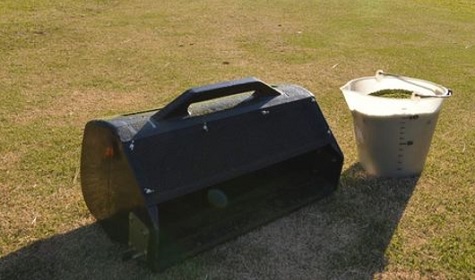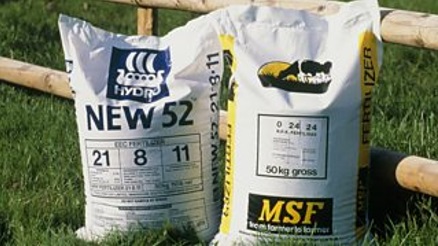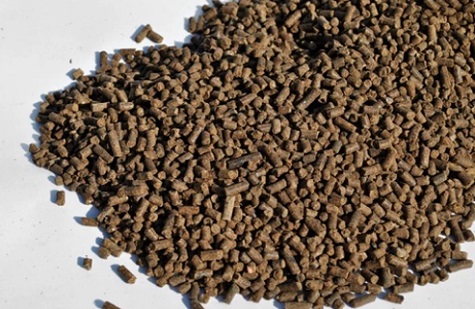When deciding how to fertilise turfgrass surfaces it is common to search and read the results of independent trials. Research and trials on nutrient requirements for different turfgrass species, however, are based on the application of synthetic/mineral fertilisers but these are often very inefficient in how the plant takes them up. This means that the amount of nutrients in kg/ha is often inaccurate compared to how much the turfgrass plant needs and/or takes up. Understanding the efficiency of fertilisers will help turfgrass managers to select the correct sources of nutrients and the quantities required for their turfgrass surfaces.
Nitrogen is the most important nutrient as it drives all plant growth processes, with optimum turfgrass health and growth depending on all other nutrients being in the correct balance. Nitrogen use efficiency (NUE) quantifies the amount of applied nitrogen that is taken up and utilised by plants versus the amount lost to the atmosphere as ammonia gas (volatilisation as NH3) and in drainage water from the rootzone (leaching). Understanding NUE is essential for optimising fertiliser use, reducing environmental impacts, and producing quality turfgrass playing surfaces. Improving NUE is crucial for sustainable turfgrass management and minimizing environmental impacts.
By focusing on improving NUE, turfgrass managers can enhance playing surface quality, reduce fertiliser costs, and minimise environmental impacts associated with nitrogen losses to water bodies and the atmosphere. NUE can vary depending on several factors such as soil conditions, climate, turfgrass species, and management practices. Both chemical and organic fertilisers can contribute to nitrogen use efficiency in turfgrass management, with chemical fertilisers providing rapid and precise nutrient delivery but come with higher risks of nutrient losses. Organic fertilisers offer slow-release benefits, improve soil health, and have lower environmental impacts but may not work as quickly as required in colder weather, e.g. when trying to present smooth playing conditions in a cold, dry April. The choice between the two depends on specific turfgrass requirements, management goals, and environmental considerations.
How to calculate Nitrogen Use Efficiency
A simplified version of the NUE calculations is the following formula:
NUE (%) = (Y₂ - Y₁) / (F - N₁) * 100
Where:
Y₂ = Clipping volume (L) with nutrient application (two weeks after granular fertilising or one week after liquid fertilising)
Y₁ = Clipping volume (L) before fertilising
F = Total nitrogen applied in kg/ha to turfgrass surface
N₁ = Foliar nitrogen content before fertilising

Clipping volume is measured by emptying the grass boxes after mowing and tipping into a large, graduated measuring jug, and the volume read off the scale on the jug in ml and/or litres. The values obtained from this calculation provide a general indication of nutrient efficiency but should be interpreted in conjunction with other factors such as soil conditions, turfgrass species, management practices, and specific site conditions.
Enhancing Nitrogen Use Efficiency
Several management practices can enhance NUE, including:
- Optimising fertiliser application timing and rate to match turf demand, e.g. using the % Growth Potential model
- Using slow/controlled-release and/or organic fertilisers that provide a steady supply of nitrogen over an extended period.
- Implementing precision turfgrass management techniques to tailor fertiliser application based on specific conditions and turfgrass needs.
- Incorporating nitrogen-fixing cover crops or rotating with leguminous crops to enhance soil nitrogen availability.
- Adjusting and monitoring irrigation practices to minimize nutrient leaching and runoff.
- Monitoring soil nutrient levels through regular rootzone and tissue testing to guide fertiliser application decisions.
How does the NUE compare between different nitrogen fertilisers?
Chemical Fertilisers:

Chemical fertilisers are synthetic products made from oil and/or mineral deposits, providing readily available nutrients to plants and typically contain ammonium nitrate, urea, or ammonium sulphate. They often have higher nutrient concentrations and are designed for fast nutrient release than organic based fertilisers. Some key points regarding NUE with chemical fertilisers:
- Fast-Release: Chemical fertilizers deliver nitrogen to turfgrass quickly, which can lead to rapid growth responses. However, this fast-release nature may also increase the risk of nutrient leaching and volatilization, especially if applied in excessive amounts or under inappropriate conditions.
- Nutrient Losses: Nitrogen losses can occur through leaching, where excessive rainfall or irrigation carries the nutrients beyond the root zone. Volatilisation can also happen when the nitrogen from urea-based fertilizers is applied to the turfgrass surface and converted into ammonia gas and lost to the atmosphere, mostly during to higher than optimum air temperatures.
- Immediate Response: Due to the rapid availability of nutrients, chemical fertilisers can provide quick greening and growth responses. However, the effects may be short-lived, requiring frequent applications to maintain desired results.
- Precision Application: Chemical fertilisers allow precise control over nutrient ratios and concentrations. This enables customised fertilisation programs tailored to specific turfgrass requirements, considering factors like soil tests, growth stage, and environmental conditions.
Examples of chemical fertilisers:
- Urea - Urea is a widely used nitrogen fertiliser that contains a high percentage of nitrogen. Its NUE can vary depending on factors such as soil moisture, temperature, and the presence of urease enzymes. On average, urea has a moderate to high NUE, ranging from 30% to 70%. However, it is important to note that urea is susceptible to nitrogen losses through volatilisation, particularly if not incorporated into the soil or when applied under dry and warm conditions.
- Methylene Urea - Methylene urea is a slow-release nitrogen fertilizer that provides a controlled release of nitrogen over an extended period. It is designed to improve NUE by gradually supplying nutrients to plants as they need them. Methylene urea generally exhibits a higher NUE compared to fast-release fertilizers like urea. It can have NUE values ranging from 50% to 80% or even higher, depending on the formulation and environmental conditions.
- Potassium Nitrate - Potassium nitrate provides both nitrogen and potassium. It is commonly used in horticulture and greenhouse applications. The NUE of potassium nitrate is typically higher than that of urea, ranging from 50% to 70%. The presence of nitrate nitrogen in potassium nitrate allows for more efficient uptake by plants compared to ammonium forms of nitrogen.
- Ammonium Sulphate -Ammonium sulphate is a nitrogen fertiliser that provides both ammonium and sulphate. It is often used in soils with high pH or when additional sulphur is required. The NUE of ammonium sulphate can vary but is generally considered relatively high, ranging from 50% to 80%. Ammonium nitrogen, present in ammonium sulphate, is readily taken up by plants, contributing to its higher NUE compared to some other nitrogen sources
Organic Fertilisers
Organic fertilisers are derived from natural sources such as compost, animal manure, bone meal, feathers, and other organic matter. They provide a slow and steady release of nutrients through microbial activity and natural decomposition. They offer a range of benefits such as improving soil fertility, promoting microbial activity, enhancing soil structure, and providing slow-release nutrients. The nutrient use efficiency of organic fertilizers can vary depending on several factors, including the type of organic fertiliser, its nutrient content, application method, soil conditions, and turfgrass requirements.
Some considerations regarding the nutrient use efficiency of organic fertilisers:

- Slow-release nature: Organic fertilisers typically release nutrients slowly over time as they undergo decomposition and microbial activity in the soil. This slow-release characteristic can enhance nutrient use efficiency by providing a continuous supply of nutrients to plants, reducing the risk of nutrient leaching or runoff. This slow-release nature reduces the risk of nutrient leaching and volatilisation, resulting in improved NUE.
- Soil Health and Structure: Organic fertilisers contribute to the improvement of soil health and structure by promoting microbial activity, enhancing nutrient retention, and increasing water-holding capacity. These factors indirectly enhance NUE by creating a favourable environment for root growth and nutrient uptake.
- Nutrient availability: The availability of nutrients in organic fertilisers is influenced by microbial activity in the soil. Microorganisms break down complex organic compounds into simpler forms that plants can readily absorb. The nutrient release rate from organic fertilisers depends on the microbial activity, which can be influenced by temperature, moisture, and soil conditions. While the initial response may be slower, the nutrients are released gradually, providing a continuous supply over an extended period.
- Nutrient balance: Organic fertilisers generally have a lower nutrient content compared to synthetic fertilisers and may not always match the exact nutrient requirements of plants. However, the presence of a wide range of nutrients, along with organic matter, can improve nutrient balance in the soil and promote overall plant health and resilience.
- Soil interactions: Organic fertilisers have a more sustained effect on turfgrass growth compared to chemical fertilisers by improving soil health through enhancing its physical, chemical, and biological properties. Healthy soils with good structure and nutrient availability can improve the nutrient use efficiency of plants. Organic fertilisers contribute to the long-term fertility of the soil and support sustainable management practices.
- Environmental Considerations: Organic fertilisers are more environmentally friendly since they rely on natural materials and reduce the risk of nutrient runoff and pollution. Their nutrient content, however, can be variable with no more than 8%-9% nitrogen content and higher application rates may be required to meet turfgrass nutritional needs.
It's important to note that while organic fertilisers offer several benefits, their nutrient release can be slower compared to synthetic fertilisers. This slower release rate may require timely application and a longer-term perspective on nutrient management. Regular soil testing and monitoring can help optimise nutrient application rates and timing to maximise nutrient use efficiency and minimise potential nutrient losses.
Examples of organic fertilisers:
- Compost - Compost is a well-decomposed organic matter produced through the controlled decomposition of plant residues, animal manures, and other organic materials. It is rich in nutrients, organic matter, and beneficial microorganisms. Compost improves soil structure, enhances water retention, and supplies a slow-release source of nutrients to the turfgrass.
- Plant-Based Meals - Plant-based meals are organic fertilisers made from various plant materials such as alfalfa meal, soybean meal, cottonseed meal, and corn gluten meal. These meals are rich in nitrogen, along with other essential nutrients. They provide slow-release nitrogen, enhance microbial activity, and improve soil fertility.
- Fish hydrolysate - Fish hydrolysate is a liquid organic fertiliser made from fish that is degraded through using enzymes. Beware of cheap fish emulsions, which are derived from rotting fish waste. True hydrolysates have much more beneficial effects on plant growth and soil health than using the cheaper fish emulsions, which are fish waste degraded using bacteria and recognised by their soup consistency and stink! True fish hydrolysate is a good source of nitrogen, phosphorus, potassium, and trace elements. Fish hydrolysate is rapidly absorbed by plants and provides a quick source of nutrients and is commonly used as a foliar spray or soil drench for fast-acting nutrient supplementation.
- Seaweed and Kelp Extracts - Seaweed and kelp extracts are derived from marine algae. They can be rich in trace elements, growth-promoting hormones, and beneficial plant compounds, depending on the species of seaweed used. Seaweed extracts enhance turfgrass growth, improve stress tolerance, and stimulate root development. They can be applied as foliar sprays or soil drenches.
- Amino Acids - Amino acids are organic compounds that contain nitrogen and are used as foliar fertilizers or soil amendments. The NUE of amino acids can vary depending on the specific formulation and application method. Amino acids have the potential to enhance NUE by improving nutrient uptake and utilization in plants, but it is challenging to provide a specific range for NUE in amino acids as it can be influenced by various factors, including the specific amino acid composition, plant species, and environmental conditions.
These organic fertilisers offer numerous advantages in turfgrass management, including slow and steady nutrient release, improved soil health, reduced nutrient leaching, and environmental sustainability. However, it's important to consider the nutrient content, application rates, and specific requirements of the turfgrass when selecting and applying organic fertilisers. Soil testing and following recommended application guidelines will help ensure proper nutrient balance and promote healthy turf growth.
It is important to note that these NUE ranges are approximate and can vary depending on specific circumstances. Additionally, NUE can be influenced by factors such as fertiliser application rate, timing, and management practices. Optimising NUE requires considering the specific turfgrass surface, rootzone conditions, and other site-specific factors to develop effective nutrient management strategies.